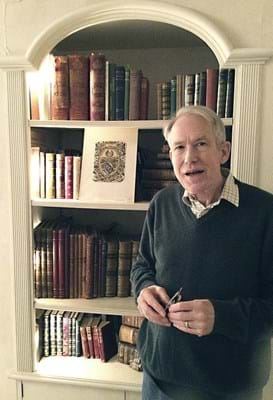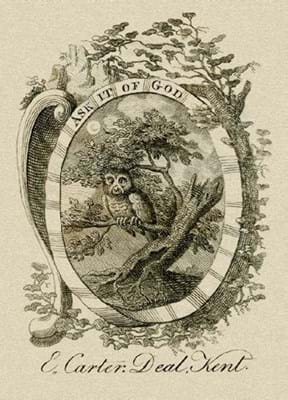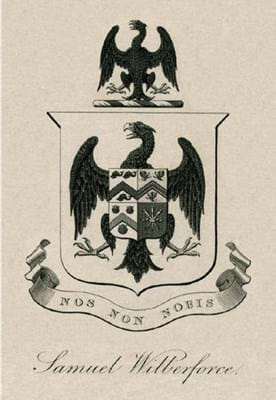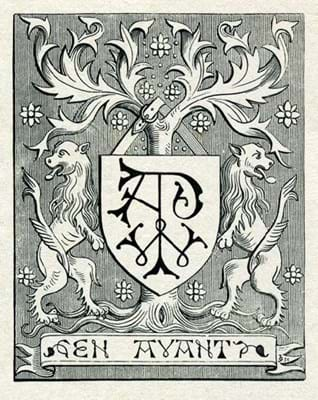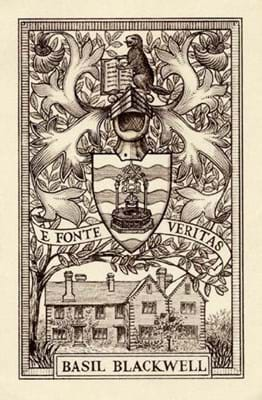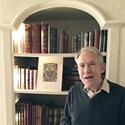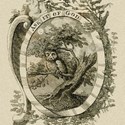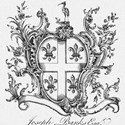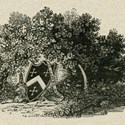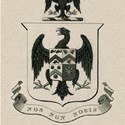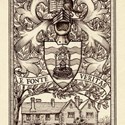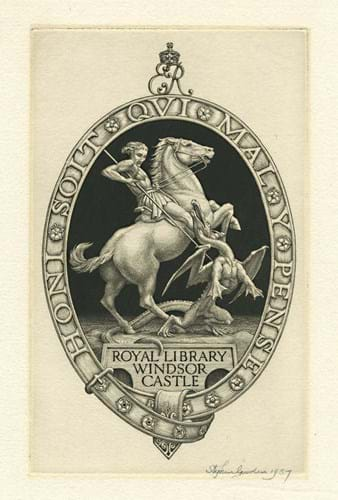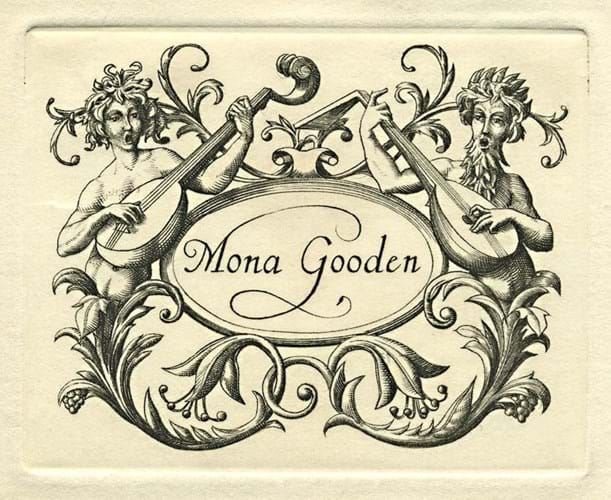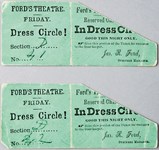He says that the biochemistry he studied at university is largely forgotten and long eclipsed by major advances.
Having retired 20 years ago from being a chartered accountant and financial manager, he now sees himself as more of a historian/ antiquary.
Much of his time is devoted to running The Bookplate Society, which at present has an auction online. A section is open to bids from non-members. It ends at 1pm on November 25 (see details below).
ATG: What are bookplates and why do they matter?
Anthony Pincott: Printed book ownership labels, armorials and pictorials, are surviving relics of past generations. For how many other objects may you say ‘My great-great-grandfather owned this’? Bookplates - it’s wrong to use this term for illustrative plates in books - have the alternative name ‘ex-libris’ (meaning ‘from the books of’).
Some ex-libris are accomplished designs by well-known illustrators and engravers. Among the celebrated persons who had their own bookplates are Queen Victoria, George Washington and Walt Disney. Lesser-known names provide opportunity for intriguing investigation of designer and owner.
Who collects them? Anyone interested in provenance, heraldry, graphic art (eg fine engraving, Art Nouveau), family history and biography.
How and when did you get the collecting bug?
In 1971 I bought a pile of 10p books from a shop in Turl Street, Oxford, then steamed out the bookplates. My thought of being the first person to collect these was rapidly dashed. By way of recognition of all those former collectors I now record them in albums of biographies.
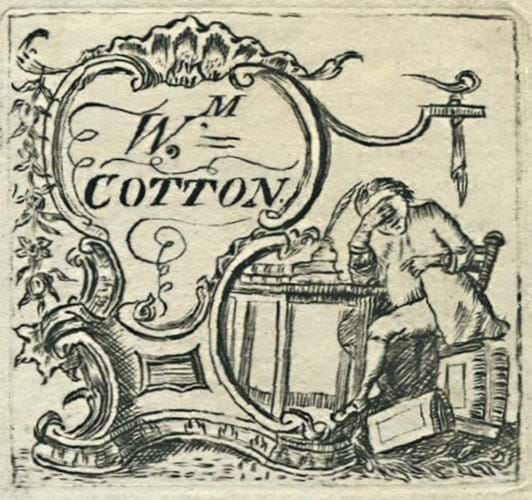
William Cotton’s quaint little pictorial (c.1745) depicts a book fallen to the floor and him exhausted by work.
What drew you to bookplates in particular?
Availability, quaintness, relative cheapness, history.
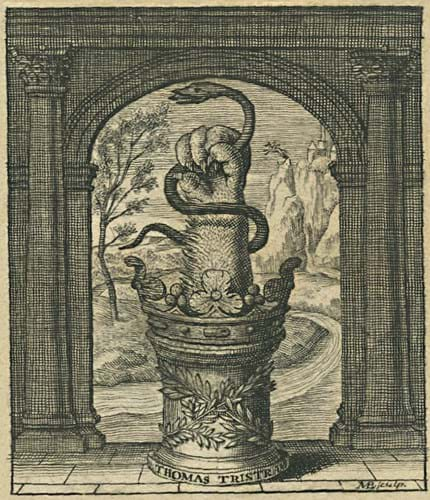
Engraved by Michael Burghers (1647/8-1727) this rare crest (c.1715) for Thomas Tristram has Pegasus jumping off Mount Helicon in the background.
Where do you find items to buy?
Book and ephemera dealers, in person and online; also public auctions and The Bookplate Society’s buoyant members’ auctions.
How extensive is your collection?
Probably some 50,000 British bookplates plus the Continental European collection of Artur Brauer, purchased en bloc, numbering about 30,000 ex-libris mostly German.
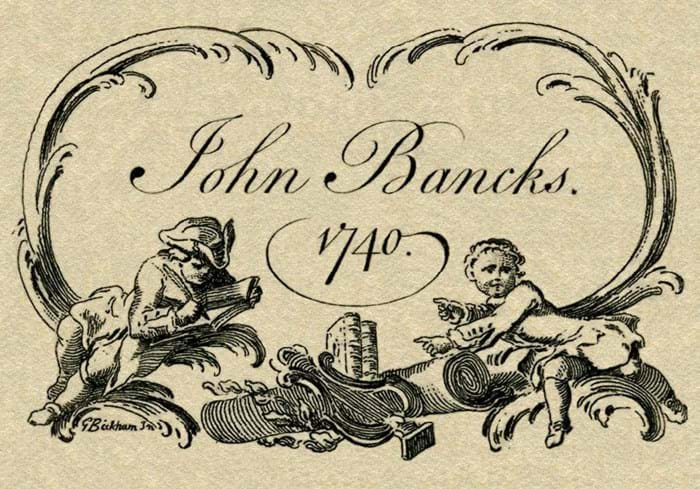
Dated 1740, engraved by George Bickham for author John Bancks (1709-51), a Georgian gentleman is writing; his young companion points to books and the inscription.
How would you describe your collecting habit?
Ever-enthusiastic. My wife says obsessive-compulsive.
Are you still adding to your collection?
Yes, good items and grist to the mill.
What do you look for when considering purchases? Scarce items and those filling gaps among engravers/ designers whose work I value.
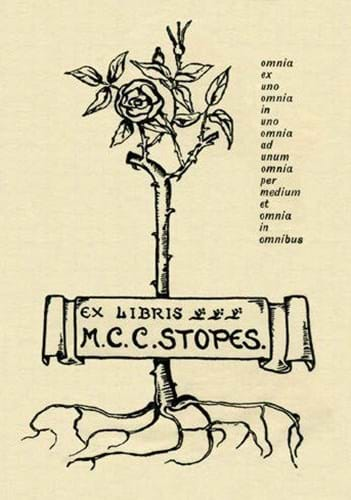
Unusual design for palaeobotanist Marie Stopes (1880-1958), pioneer in giving birth control advice.
What is the most you have ever spent on an item for your collection?
About £2000 for the portrait bookplate of Samuel Pepys. I already had a unique uncompleted proof before letters. The Pepys armorial and anchor plates may never come my way, but gathering print-quality images also brings some satisfaction.
Is there a notable discovery you have made and are particularly proud of?
In 1972 I went round Oxford colleges and from their account books identified William Jackson as one of the Holborn-based engravers who promoted the use of bookplates in the first years of the 18th century.
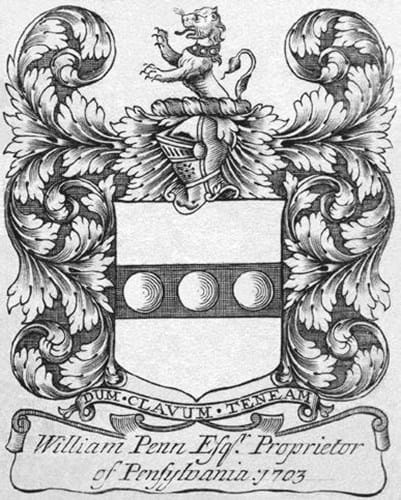
Quaker religious thinker William Penn (1644-1718) founded the state of Pennsylvania. The Holborn workshop of William Jackson promoted this style of bookplate in the first decade of the 18th century.
More recently, effort was rewarded in deciphering ‘CIMZ’, a contributor to Notes & Queries (the scholarly journal first published in 1849), as bookplate collector Charles Morse (1820-83) of Norfolk and Dresden.
How do you store and display your collection?
Nothing would be findable except in two alphabetic sequences by owner and by artist. This requires mounting ex-libris with stamp hinges on loose leaves, held in Stanley Gibbons Devon albums. A few choice bookplates, framed, hang on walls about the house. Half a dozen discrete collections, formed by earlier collectors, remain preserved intact in their original albums. To these I have indexes. Good visual recall helps.
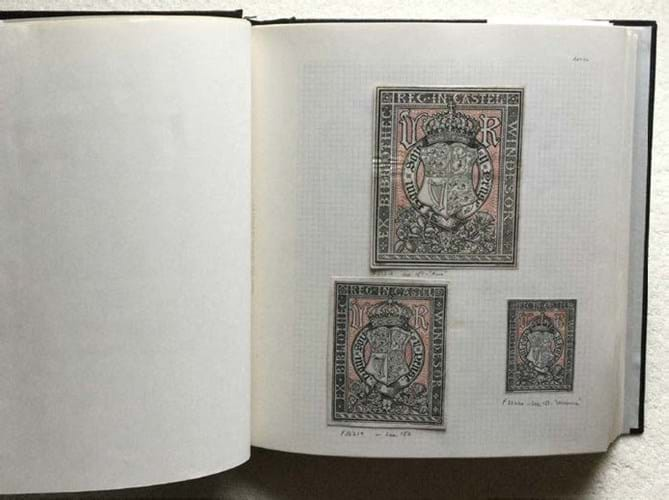
One of the Devon albums used to store the collection, with the page open at Queen Victoria’s bookplate in three sizes.
Do you sell items from your collection?
Yes, if true duplicates - I consider it selfish to withhold these from other collectors.
Do you collect anything else?
Impossible. I have yet to work out how to get several additional lifetimes in order to achieve all I wish to do.
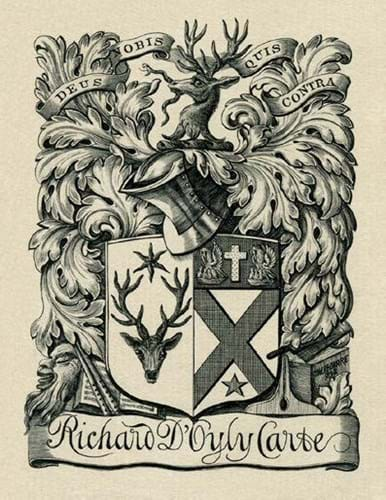
Engraved 1898 by leading Victorian bookplate-maker CW Sherborn (1831-1912) for theatre impresario Richard D’Oyly Carte (1844-1901) who built the prestigious Savoy Hotel. Neither WS Gilbert nor Arthur Sullivan used a bookplate, it seems.
What advice would you give a young collector?
Persistence will bring rewards. Focus on what pleases you. Paying a reasonable premium price (but no more) is less irritating than recalling the items that escaped you.

Rev William Dodd (1729-77), convicted of forging a £4200 bond, was hanged at Tyburn. Fame and notoriety add value to any ex-libris.
What aspect of collecting gives you most pleasure?
Assembling articles for publication still has rich opportunity for undertaking fruitful research.
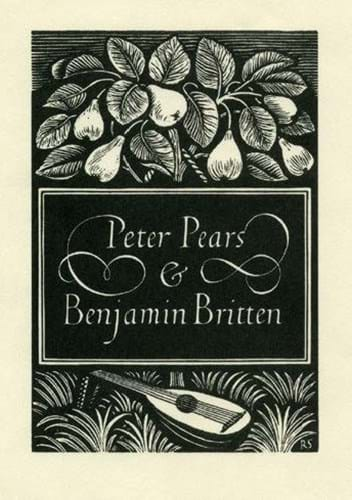
Superb wood-engraving (1970) by Reynolds Stone (1909-79) for composer Benjamin Britten (1913-76) and his life-partner, tenor Peter Pears (1910-86).
What does the Bookplate Society do and what is your role there?
The Bookplate Society, a registered charity run by volunteers, was founded in 1972 but is the direct successor through the Bookplate Exchange Club (established 1899) of the Ex Libris Society (1890-1909). It exists to foster the study of ex-libris - through publications, auctions and occasional exhibitions.
My roles are too many (treasurer, editor, webmaster, joint auctioneer etc) and the committee would welcome support from someone, maybe 50s with good computer skills, whose primary reward will be to learn that this is a fascinating field of remarkable breadth.
When is your next Bookplate Society auction?
We have an online auction (#99) running until November 25 (see link below).
Unusually, part of this auction is being opened to non-members, because it includes an exceptional batch of fine prints by Stephen Gooden CBE RA RE (1892-1955), artist and engraver on copper.
He did much of his best work for the Nonesuch Press or George Harrap & Co, but also designed magnificent banknotes.
Demonstrating a fertile imagination and unrivalled skill as an engraver, he created fine bookplates for friends and his wife Mona plus a remarkable series for British royalty.
The pity is that, by illustrating books in limited editions and by producing ex-libris mainly for wealthy clients, he was not, and still is not, widely known.
Even his superb blue £5 Britannia banknote did not appear until 1957, two years after his death.
Look quickly before auction ends: bookplatesociety.org/Auction99.htm
These items are in the Bookplate Society’s online auction ending at 1pm on November 25:
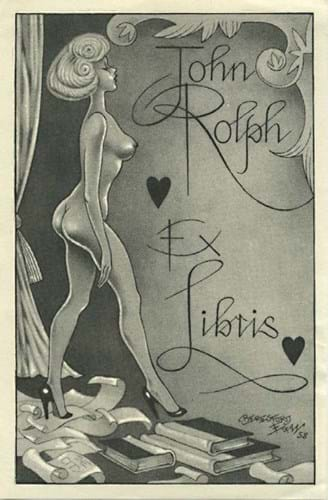
Woman steps among papers and books. Created (1958) for John Rolph, bookseller of Lowestoft, by Beresford Egan (1905-84).


